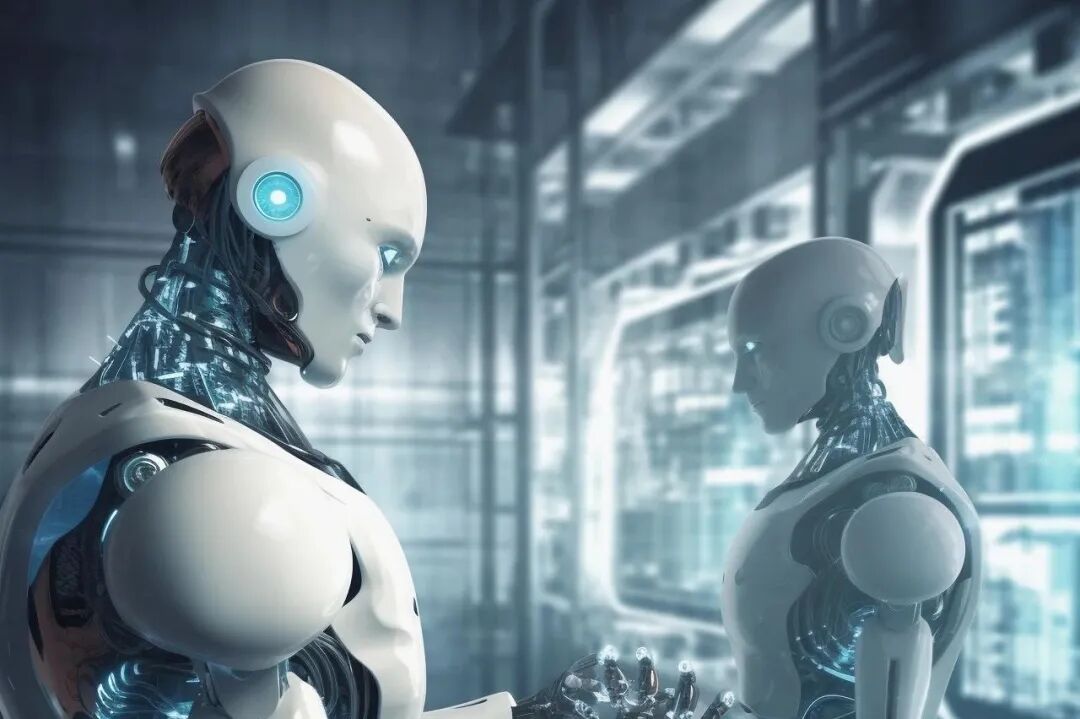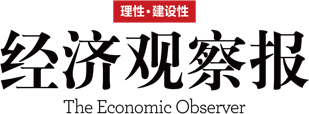
 On one side, leading companies are going all in, while on the other side, investors are beginning to fall into a skepticism about the technology. The question now facing everyone is: Will the year 2025 for humanoid robots be the final celebration of a bubble, or the arrival of a critical turning point?
On one side, leading companies are going all in, while on the other side, investors are beginning to fall into a skepticism about the technology. The question now facing everyone is: Will the year 2025 for humanoid robots be the final celebration of a bubble, or the arrival of a critical turning point?
 Author: Chen Bai Cover Image: Tuchong Creative
Author: Chen Bai Cover Image: Tuchong Creative
 What will be the hottest track in 2025? Humanoid robots will definitely rank among the top three.Since UTree Robotics appeared on the Spring Festival Gala stage, the attention towards humanoid robots has skyrocketed this year.Especially with the hosting of the Yizhuang Robot Marathon, this attention has reached its peak. The overseas market’s interest in robots is no less than that of the domestic market; for instance, in Tesla’s Q1 2025 update report, the company showcased the production line for the Optimus humanoid robot for the first time.The field of robotics, once regarded as synonymous with science fiction, suddenly stands at the forefront of technological innovation and capital pursuit in 2025. However, alongside the amazement at technological advancements, skepticism about the “bubble theory” has also begun to emerge. One of the most representative voices is that of Zhu Xiaohua, chairman of Jinsha River Venture Capital, regarding humanoid robots.In an interview, Zhu Xiaohua stated: “Embodied intelligence is particularly hot right now, but I feel the commercial path is still unclear, especially for humanoid robots. I often joke that now any humanoid robot can do a somersault, but where is the commercialization?” Zhu Xiaohua said, “We are actively exiting humanoid robot companies in bulk” and “The consensus on robots is concentrated, but commercialization is unclear.”Zhu Xiaohua’s expression resonated with many people’s sentiments. Following this, many investors also expressed skepticism about the humanoid robot track. Fu Sheng, chairman of Cheetah Mobile, stated in his video that humanoid robots may not necessarily be the optimal technological commercialization route.On one side, leading companies are going all in, while on the other side, investors are beginning to fall into a skepticism about the technology. The question now facing everyone is:Will the year 2025 for humanoid robots be the final celebration of a bubble, or the arrival of a critical turning point? The answer has always been clear. From the perspective of long economic cycles, historical experience has already told us,in the wave of technological revolutions, moderate bubbles are indeed special catalysts that drive the progress of civilization.The series of controversies triggered by humanoid robots today essentially reflects a divergence in the understanding of technological maturity. Opponents point out that current products still have generational gaps in core indicators such as motion control, environmental perception, and energy efficiency compared to practical applications, and humanoid robots may not even be necessary.Whether the specific technological route of humanoid robots is correct, I believe the future market and capital will spontaneously choose through voting with their feet. However, if we believe that greatness cannot be planned and innovation arises from emergence, then in the large-scale process of survival of the fittest, bubbles are actually inevitable events.If we extend our view to the historical dimension of the industrial revolution, we will find that every disruptive technology’s early birth is accompanied by the occurrence of bubbles, but bubbles may also prepare for the birth of new things—after the 17th-century Dutch tulip bubble dissipated, the embryonic form of the modern financial system was left behind; when the internet bubble burst in 2000, the global fiber optic network was also formed through that wave of enthusiasm. The influx of technological investments into the humanoid robot field today is objectively laying the groundwork for the next real transformation.In this process, if there is anything that truly needs to be warned about, it is that money from outside the market should not choose winners, but should maintain restraint and caution.Of course, returning to the short to medium term, Zhu Xiaohua’s anxiety is also understandable. From the investor’s perspective, the return on investment is certainly the most important criterion. Historical experience shows that in the early stages of disruptive technologies such as semiconductors and the internet, the “trial and error costs” in bubbles are often borne by the capital side. But this is precisely the inherent meaning of venture capital. Objectively speaking, the “cold water” poured out by Zhu Xiaohua will also force the industry to distinguish between “pseudo-demand” and “true pain points,” pushing the industry to rethink the feasibility of technological routes.Currently, the financing boom and valuation bubble in the humanoid robot track coexist, which is very similar to the “burning money competition” in the early stage of AI chip startups; its essence is “venture capital” before the technology maturity curve— the exit of failures creates space for successes, while the bubble itself becomes a “stress test” to filter out true technological barriers.From historical experience, when large models resonate with embodied intelligence, and hardware costs decrease with scale effects, embodied intelligence may indeed reconstruct social production methods like smartphones, and the breakthroughs of the final survivors will reshape the industry landscape.Returning to the perspective of technological revolutions driving economic growth, when the capital bubble recedes, what truly remains in the world is not just a few star enterprises or products, but a thoroughly transformed manufacturing system, a redefined human-machine relationship, and a social governance framework adapted to the intelligent era.The collaborative algorithms, ethical frameworks, and flexible manufacturing technologies accumulated in the humanoid robot field today, even if ultimately proven wrong, will surely provide valuable references and insights for future human-machine symbiosis. From this perspective, we might as well be a bit more patient with the bubbles.(The author is a senior media person)
What will be the hottest track in 2025? Humanoid robots will definitely rank among the top three.Since UTree Robotics appeared on the Spring Festival Gala stage, the attention towards humanoid robots has skyrocketed this year.Especially with the hosting of the Yizhuang Robot Marathon, this attention has reached its peak. The overseas market’s interest in robots is no less than that of the domestic market; for instance, in Tesla’s Q1 2025 update report, the company showcased the production line for the Optimus humanoid robot for the first time.The field of robotics, once regarded as synonymous with science fiction, suddenly stands at the forefront of technological innovation and capital pursuit in 2025. However, alongside the amazement at technological advancements, skepticism about the “bubble theory” has also begun to emerge. One of the most representative voices is that of Zhu Xiaohua, chairman of Jinsha River Venture Capital, regarding humanoid robots.In an interview, Zhu Xiaohua stated: “Embodied intelligence is particularly hot right now, but I feel the commercial path is still unclear, especially for humanoid robots. I often joke that now any humanoid robot can do a somersault, but where is the commercialization?” Zhu Xiaohua said, “We are actively exiting humanoid robot companies in bulk” and “The consensus on robots is concentrated, but commercialization is unclear.”Zhu Xiaohua’s expression resonated with many people’s sentiments. Following this, many investors also expressed skepticism about the humanoid robot track. Fu Sheng, chairman of Cheetah Mobile, stated in his video that humanoid robots may not necessarily be the optimal technological commercialization route.On one side, leading companies are going all in, while on the other side, investors are beginning to fall into a skepticism about the technology. The question now facing everyone is:Will the year 2025 for humanoid robots be the final celebration of a bubble, or the arrival of a critical turning point? The answer has always been clear. From the perspective of long economic cycles, historical experience has already told us,in the wave of technological revolutions, moderate bubbles are indeed special catalysts that drive the progress of civilization.The series of controversies triggered by humanoid robots today essentially reflects a divergence in the understanding of technological maturity. Opponents point out that current products still have generational gaps in core indicators such as motion control, environmental perception, and energy efficiency compared to practical applications, and humanoid robots may not even be necessary.Whether the specific technological route of humanoid robots is correct, I believe the future market and capital will spontaneously choose through voting with their feet. However, if we believe that greatness cannot be planned and innovation arises from emergence, then in the large-scale process of survival of the fittest, bubbles are actually inevitable events.If we extend our view to the historical dimension of the industrial revolution, we will find that every disruptive technology’s early birth is accompanied by the occurrence of bubbles, but bubbles may also prepare for the birth of new things—after the 17th-century Dutch tulip bubble dissipated, the embryonic form of the modern financial system was left behind; when the internet bubble burst in 2000, the global fiber optic network was also formed through that wave of enthusiasm. The influx of technological investments into the humanoid robot field today is objectively laying the groundwork for the next real transformation.In this process, if there is anything that truly needs to be warned about, it is that money from outside the market should not choose winners, but should maintain restraint and caution.Of course, returning to the short to medium term, Zhu Xiaohua’s anxiety is also understandable. From the investor’s perspective, the return on investment is certainly the most important criterion. Historical experience shows that in the early stages of disruptive technologies such as semiconductors and the internet, the “trial and error costs” in bubbles are often borne by the capital side. But this is precisely the inherent meaning of venture capital. Objectively speaking, the “cold water” poured out by Zhu Xiaohua will also force the industry to distinguish between “pseudo-demand” and “true pain points,” pushing the industry to rethink the feasibility of technological routes.Currently, the financing boom and valuation bubble in the humanoid robot track coexist, which is very similar to the “burning money competition” in the early stage of AI chip startups; its essence is “venture capital” before the technology maturity curve— the exit of failures creates space for successes, while the bubble itself becomes a “stress test” to filter out true technological barriers.From historical experience, when large models resonate with embodied intelligence, and hardware costs decrease with scale effects, embodied intelligence may indeed reconstruct social production methods like smartphones, and the breakthroughs of the final survivors will reshape the industry landscape.Returning to the perspective of technological revolutions driving economic growth, when the capital bubble recedes, what truly remains in the world is not just a few star enterprises or products, but a thoroughly transformed manufacturing system, a redefined human-machine relationship, and a social governance framework adapted to the intelligent era.The collaborative algorithms, ethical frameworks, and flexible manufacturing technologies accumulated in the humanoid robot field today, even if ultimately proven wrong, will surely provide valuable references and insights for future human-machine symbiosis. From this perspective, we might as well be a bit more patient with the bubbles.(The author is a senior media person)




